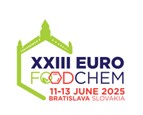Scientific journal
Journal of Food and Nutrition Research
Summary No. 1 / 2022
Guzmán-Ceferino, J. – Morales-Ovando, M. – Moguel-Ordoñez, Y. – Betancur-Ancona, D. – Carrera-Lanestosa, A.
In vitro antioxidant and alpha-amylase inhibitory activity of extracts from peel and pulp of Chrysophyllum cainito cultivated in the Mexican southeast
Journal of Food and Nutrition Research, 61, 2022, No. 1, s. 16-26
Areli Carrera, Food Biotechnology Laboratory, Juárez Autonomous University of Tabasco, Road Villahermosa-Teapa S/N, 86280 Villahermosa, Tabasco, México. e-mail: areli.carrera2000@gmail.com
Received 2 July 2021; 1st revised 21 October 2021; accepted 2 November 2021; published online 11 January 2022.
Summary: Four extracts of Chrysophyllum cainito L. were made, namely, ethanolic extract of pulp (EEPC), ethanolic extract of peel (EECC), aqueous extract of pulp (EAPC) and aqueous extract of peel (EACC). The content of phenols and flavonoids, as well as antioxidant activity and in vitro antidiabetic activity, were determined for these extracts. EECC showed a higher content of phenolic compounds and total flavonoids compared to the pulp extracts, specifically
Keywords: Chrysophyllum cainito; phenolic; flavonoid; antioxidant activity; alpha-amylase
Download:
(pdf, 609.59 Kb, 2107x)










